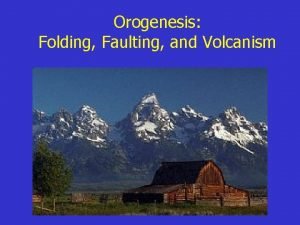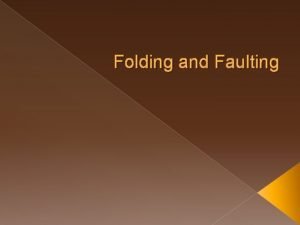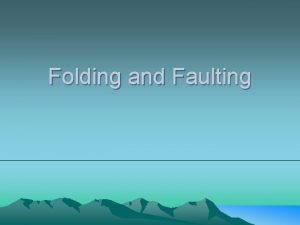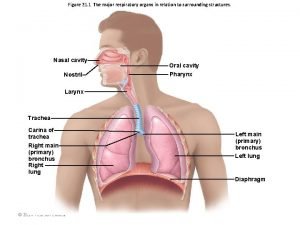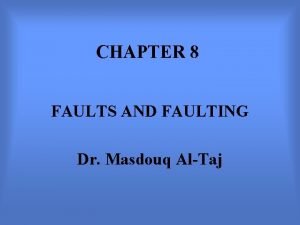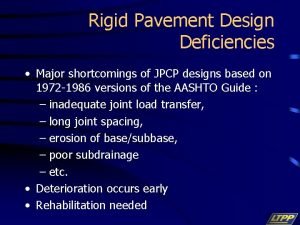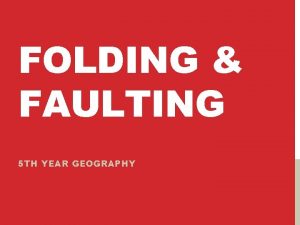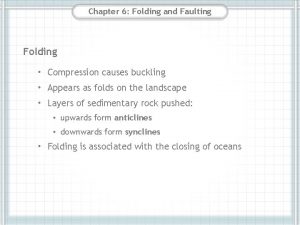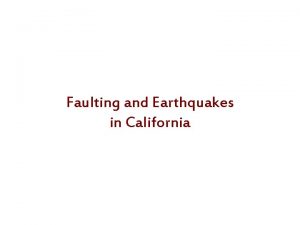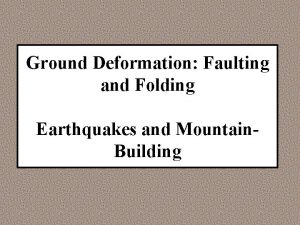Folding and Faulting What is a Fold A










- Slides: 10

Folding and Faulting

What is a Fold? A fold is a bent rock layer or series of layers that were originally horizontal and subsequently deformed. � Due to compression forces. � They are most visible in rocks that have layers. �

Types of Folds The two most common types of folds are, anticlines and synclines. � Anticlines are the upfolding and/or arching of sedimentary layers. � Synclines down-folds or troughs. �

Types of Folds The simplest type of fold is called a monocline. � This fold involves a slight bend in otherwise parallel layers of rock. � There is a single slope �

What is a Fault? Faults are a break in a rock mass along which movement has occurred. � When the stresses overcome the internal strength of the rock, resulting in a fracture. �

Types of Faults: Normal Faults Fault in which the rock above the fault plane has moved down relative to the rock below. � Formed by tension. � Footwall

Types of Faults: Reverse Faults Fault in which the material above the fault plane moves up in relation to the material below. � Formed by Hanging wall compression �

Graben A valley formed by the downward displacement of a fault-bounded block. � Produced when tensional stresses result in the subsidence of a block of rock. �

Horst An elongated, uplifted block of crust bounded by faults. � Development of two reverse faults causing a block of rock to be pushed up. �

Types of Faults: Transform Fault A major strike-slip fault that cuts through the lithosphere and accommodates motion between two plates. � These faults are vertical in nature and are produced where the stresses are exerted parallel to each other (shear). � http: //www. algebra 4 children. com/Geography/faulting-folding. html
